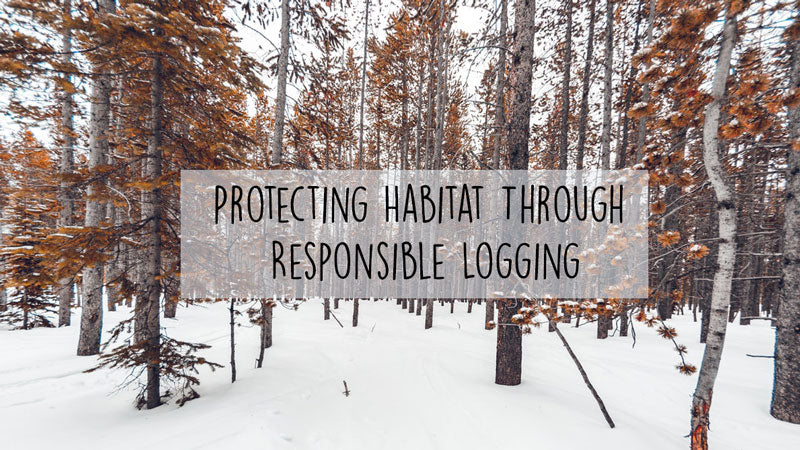Offer
Provide additional details about the offer you're running.
Provide additional details about the offer you're running.
Provide additional details about the offer you're running.

If you know us at all or have watched or read any of our content on our website or YouTube channel, you are already aware of our commitment to long-term sustainability of our natural resources. The big reason behind this is simple; the protection of vital habitat that ensures safe and healthy bird populations for generations to come.
While the common house cat and window strikes do some serious damage to bird populations, habitat loss is far and away the largest contributor to dwindling bird populations. While we must certainly remain mindful about other factors such as window strikes, the fact remains that we have lost more birds by removing trees and wooded areas than anything else.
As we are sure you are familiar with our big, beautiful country, Canada is rich when it comes to natural resources, particularly in forestry. With millions of acres of pristine forests and wild places scattered across this great land, it is up to us to ensure that it is managed properly. Globally speaking, Canada is home to roughly 9 percent of the world’s forests – we have a huge responsibility and directly contribute to the health of the global ecosystem.
As such, as a country we have enacted a number of laws and regulations that set aside protected areas, protect wildlife, respect Aboriginal and treaty rights, specify harvesting and regeneration practices and prevent illegal logging practices.
Selective Harvest
There are three main types of logging practices used by governments and large organizations when it comes to logging; shelter wood, clear cutting and selective harvest. While all three have been used over the years, the method of selective harvest has been proven to be amongst the best choices.
As the name suggests, this practice involves cutting down one or two species of trees while leaving the rest intact, conserving the use of trees. Typically speaking, this method allows the ecosystem to continue to support more wildlife, allows the forest to retain resistance against disease and pests and allows for carbon uptake levels to quickly regain.
How Selective?
While, in principle, selective harvest makes a ton of sense, the question remains – just how selective should we be and on what scale?
Considering the species that will be removed as well as how many in any given area, for example, has long-term consequences that could potentially be irreversible. As stewards of the environment, it is our job to ensure these practices remain consistent with the goal of sustainability before our resources are stolen right from beneath our noses.
High Quality Blend